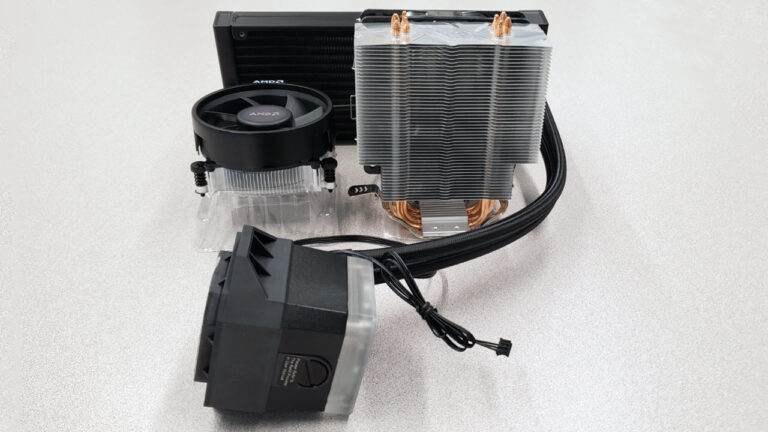Why Does My TV Turn On By Itself at 3 AM? Late-Night TV Startups
Have you ever been startled awake in the dead of night, only to find that your television has mysteriously turned on, casting an eerie glow throughout the room? If this has happened to you, you’re not alone. The phenomenon of a TV turning on by itself, particularly at 3 AM, has left countless people both puzzled and slightly spooked.
The mysterious late-night awakening of your TV at 3 AM can often be attributed to various everyday factors. Like Stuck Remote Control Button, Low Batteries, Internal Timer Settings
Connected Devices, HDMI or CEC Settings, or Power Strip Connection, etc.
Let’s investigate workable alternatives to end those sleepless nights and discover the truth behind this strange occurrence.
Common Causes of Unexpected TV Power Cycling: Solving the Mystery

Stuck Remote Control Button: When confronted with the enigma of your TV springing to life unexpectedly, the simplest explanation often holds the key. A remote control harboring a jammed or obstructed power button can inadvertently dispatch signals to your TV, prompting unforeseen power fluctuations. It’s advisable to scrutinize your remote control for any obstructions or debris hindering its regular operation.
Low Battery Woes: Remote controls rely heavily on their batteries to operate seamlessly. As these batteries near exhaustion, they may emit erratic signals that jolt your TV into action. To ward off these uninvited power surges, ensure your remote’s batteries are not only fresh but also properly seated, ready to assert your control over the TV.
Internal Timer Enigma: Concealed within your TV may lie internal timers, capable of orchestrating its spontaneous awakenings. Inadvertently configured timers can be the elusive reason behind your TV’s untimely forays into the land of wakefulness. A vigilant review of your TV’s settings is prudent to unearth any accidental timer activations that are causing your TV to obey preset schedules.
Mischievous Connected Devices: Occasionally, the presence of auxiliary electronic devices in proximity to your TV can be the puppeteer behind its erratic on-and-off performances. Devices such as routers, network peripherals, or USB wireless LAN adaptors might inadvertently dispatch signals that stir your TV from its slumber. A thorough investigation into the behavior of these devices and their positioning may unveil the culprits.
HDMI or CEC Settings Intrigue: The intricate world of HDMI and Consumer Electronics Control (CEC) settings provides a stage for devices to interact with your TV. Should your TV be configured to heed these signals, it might rouse from its dormant state when a connected device, like a gaming console or Blu-ray player, springs to life. Exploring settings can offer insights into whether deactivating HDMI or CEC control can quell these disturbances.
The Power Strip Paradox: A less-explored yet equally plausible scenario involves connection to a power strip. If this power strip’s switch remains stubbornly in the ‘on’ position, it could silently orchestrate unexpected nocturnal escapades.
Light Switch Liaison: Convenience often leads to the wiring of TVs to outlets controlled by light switches. When the switch is engaged, your TV obediently follows suit, launching into action without any prior warning.
Neighborly Remote Intrusion: In a peculiar twist of fate, your neighbor may inadvertently become the orchestrator of your TV’s midnight screenings. If your neighbor owns a remote control that has been programmed to command your TV, and if both TVs share the same model, accidental synchronization may be the root cause.
Pet-Induced Puzzlement: While your bearded dragon might be exempt from suspicion, larger pets like cats and dogs can inadvertently trigger. A playful nudge of the remote control or a mischievous leap onto the TV can set in motion an unintended performance, often unfolding at the unsettling hour of 3 AM.
Troubleshooting Your TV: 10 Steps to Solve the Mystery of Unwanted Power On/Off
Unplug Your TV (and Plug It Into the Wall): Like any tech quirk, the first step is as simple as power cycling. Unplug your TV completely, press and hold the power button for a full 10 seconds, and then plug it back in to see if the issue persists.
Then, if your TV is currently connected to a surge protector, consider bypassing it and plugging your TV directly into a wall outlet to eliminate it as a variable. If it was already plugged into the wall, attempt another outlet, preferably one not governed by a switch. In some cases, plugging back into a surge protector might be a prudent choice.
Turn Off HDMI-CEC: Betting on HDMI-CEC as the mischievous culprit behind your TV’s power woes is a reasonable gamble. HDMI-CEC, short for Consumer Electronics Control, allows devices to control each other through HDMI.
For instance, when you power your PlayStation, CEC can intelligently activate your TV and switch it to the correct input, all without needing your remote. This feature is highly convenient when it operates seamlessly but can become the source of your TV’s erratic on-and-off cycle. Dive into your TV’s settings menu and seek out the option to disable CEC, albeit it might have a different moniker depending on your TV’s manufacturer. Sony dubs it Bravia Sync, Samsung names it Anynet+, and LG goes by SimpLink. You might need to explore a bit to identify the setting on your TV.
Further, if this alleviates the problem, yet you wish to continue using CEC, be prepared to disable the feature on your other connected devices one by one until you identify the one inadvertently transmitting signals that disrupt your TV’s tranquility.
Disconnect From Wi-Fi: Oddly enough, the “smart” features of many modern TVs can sometimes outsmart themselves, causing a bit of confusion. If your TV is connected to other smart home devices such as SmartThings, Alexa, Google Home, or Logitech Harmony, there’s a possibility that a routine or automation is unintentionally triggering your TV to turn on or off.
Moreover, if your TV boasts built-in casting capabilities, such as Google Cast or Apple AirPlay, your phone might be inadvertently activating your TV each time you try to watch a YouTube video. Prior to combing through each app individually, venture into your TV’s settings and disconnect it from Wi-Fi for a few days.
Also, this should prevent the smart services from establishing connections and sending accidental signals. If this resolves the issue, you may need to delve into your other smart apps and devices to determine if one of them routinely interferes with your TV.
Check Your TV’s Power Timer: Many contemporary TVs feature a power scheduling function that allows you to program your TV to turn on or off at specific times. If you notice it consistently powering on or off at the same time like clockwork, it’s conceivable that someone, perhaps a child or even a curious pet, inadvertently configured this feature.
In addition, the solution is to navigate through your TV’s settings and locate the power-scheduling feature, ensuring it is disabled. You might need to conduct an online search or refer to your TV’s manual for assistance in finding this feature within the menus.
Change the Batteries in Your Remote: Sometimes, the batteries in your remote can be the unseen culprit, transmitting erroneous signals as their power level fluctuates. Swap in a fresh set of batteries to your remote control and observe whether this resolves the issue.
While you’re at it, give the remote buttons a thorough cleaning. If the power button is sticky due to a past spill, it could be as simple as the button sticking and inadvertently toggling it on or off.
Adjust Your TV’s Eco Mode: Many contemporary TVs don’t completely power off when you press the power button. Instead, they enter a low-power sleep mode, enabling features like automatic activation when someone casts content from a mobile device. If you can’t pinpoint the problem, consider activating your TV’s Eco Mode.
Further, the specific name for this mode may vary by brand, but the essential function is the complete shutdown of your TV when it’s not in use. A few built-in features may be sacrificed, but this approach should restore peace and allow you to identify the issue.
Update the Firmware: As is often the case with tech, sometimes problems stem from software bugs that a simple update can rectify. Nevertheless, this suggestion is placed lower on the list because it firmware updates can occasionally introduce their own issues.
I recommend updating only if it becomes absolutely necessary. If you haven’t yet identified the source of the problem, venture into settings to check for available firmware updates. Certain ones may require manual installation using a flash drive, so consult the manufacturer’s support site to check for updates pertaining to your specific model.
Perform a Factory Reset: lastly, if all else fails, it may be time to restore your TV to its factory settings. By doing this, any settings responsible for the problem should revert to their default configurations.
When proceeding, exercise caution and modify settings one by one, leaving a few days between adjustments. This approach enables you to identify the specific setting causing the issue should it resurface.
Seek Professional Support: Should a factory reset prove ineffective, reaching out to the manufacturer’s support is the logical next step. Your TV model may have a known bug or hardware issue that only a technician can resolve conclusively.
FAQs
Why does my TV turn itself on in the middle of the night?
TVs can turn on unexpectedly due to issues like a stuck remote control button, low batteries, internal timer settings, or external devices sending signals.
Why does my Philips TV turn on by itself?
Philips TVs might turn on spontaneously because of remote control issues, timer settings, connected devices, or HDMI-CEC interactions.
Why does my Sony TV keep turning on by itself?
Sony TVs may turn on autonomously due to problems with the remote control, timers, external devices, or HDMI-CEC settings.
Why does my TV turn on but no picture?
When a TV turns on but displays no picture, it could be related to cable connections, input source, or a faulty display panel.
What causes a TV to ghost?
TV ghosting, or double images, may result from signal interference, poor cable connections, or outdated TV technology.
How do you stop TV from turning on by itself?
To prevent a TV from turning on unexpectedly, check for stuck remote control buttons, replace low remote batteries, review timer settings, and disable HDMI-CEC if needed.
Is it normal for a TV to turn on by itself?
It’s not typical for a TV to turn on spontaneously, but it can occur due to various technical issues or settings. Identifying and addressing the specific cause is essential to prevent it.
Final Words
In the quiet of the night, you might wonder why your TV suddenly turns on at 3 AM. The answer isn’t as mysterious as it seems. It often comes down to common issues with technology and daily life.
For instance, a TV remote with a stuck button or low batteries can accidentally send signals to the TV. Internal timers or connected devices like routers can also play a role. Even settings related to HDMI and device control can be culprits.
Sometimes, it’s as simple as the TV being plugged into a power strip that’s left on or connected to an outlet with a light switch. Even your neighbors’ remote or your playful pets can be involved.
So, when your TV has a late-night adventure, it’s usually due to these everyday reasons. By understanding and addressing these possibilities, you can get back to peaceful nights, knowing that it’s not a ghostly event but just technology acting on some unexpected commands.







